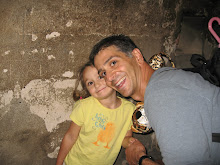The ability to think critically, to pose logical questions and challenge comfortable assumptions, is probably the single most important outcome of a university education. It is the very purpose for the paper-writing assignment that is the staple of almost every university class. Yet as exemplified by last week’s major news story, critical thinking is sorely lacking in American journalism.
By now the story is well known. A family in Colorado called police claiming that their 6-year old son was aboard a homemade balloon 10,000 feet in the sky. For hours, the news stations filmed the silvery balloon as it drifted. Eventually, it came down… and it turned out the son was hiding in the attic. Interviews and media frenzy followed, in which it came out that whole event was a hoax.
Perhaps the most important guide for critical thinking was the fourteenth-century William of Ockham. He developed a line of reasoning known as “Ockham’s razor”: when choosing among competing theories, the simplest is probably correct. So even before the hoax was revealed, what would “Ockham’s razor” have suggested? The family had spent weeks building a balloon, but after launch they couldn’t find the child: was he aboard the craft he’d accidentally launched, or somewhere on the ground? Of course, the simpler answer was the second—which turned out to be correct. But the media opted into the less logical, more sensational answer.
Assessment of a situation takes time, something the current 24-hour news cycle doesn’t allow for. In last week’s entry, I wrote about the need for time, and this story exemplifies my point perfectly. Undoubtedly the decision to air the story was instantaneous, but it takes time and calmness to assess the situation, and hence to formulate relevant questions: could a balloon of that size carry a child? Why didn’t the family have the safety features in place to prevent accidents (i.e., a fence, or a redundant launch protocol)? Is this really news? And perhaps most important, did the story even rise to the level of national importance?
The major news organizations spent several hours covering a lone balloon. What other information could have been provided in that amount of time? What other valid news stories could have been aired which might have served the populace better?
Uncritical judgments do no service to the society. What happened last week was a collective failure of critical thinking on the part of the media. Sadly, uncritical journalism has become the norm. Jon Stewart has made a career of skewering ill-informed newscasters who can’t discern fact from hyperbole.
Instruction in the humanities is an important aspect of learning critical thinking. Insightful readings can provide a model of rational analysis. Writing assignments teach students to express their opinions. More importantly, they remind students that valid opinions are based on facts, and facts can be ascertained only by asking the right questions. Over time students learn to challenge pat answers—the kind of pat answers comprising the anchors’ uninformed commentary as a balloon soared through the sky.
Wednesday, October 28, 2009
Subscribe to:
Post Comments (Atom)




No comments:
Post a Comment
Note: Only a member of this blog may post a comment.